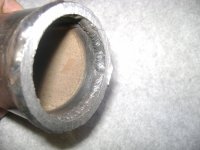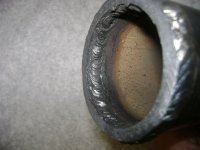I would look at replacing the brick also . That is your first line of defense inside the stove and well , those in your picture look like they are beyond used up . We have the Quadra-fire Fire place in our 1800 sq. ft. house and we cannot even come close to getting it to hot . Designed to heat up to 3600 sq. ft. , it does real nice with smaller , less intense fires made of oak and madrone . I have seen the same thing on a small cast iron parlor stove years ago . People took out these cast iron shields that hung on the inside so they could put bigger wood inside it . To much direct heat to the sides cracked it open like yours on both sides .
I see your stove has it , ( my parents have a similar stove as yours , had it for years without issue ) , but our fireplace also that " Baffle " made out of this " Board " type stuff that is above the actual fire . Looks like Hardi backer or wonder board , but not as heavy . Also has a matting type stuff on top of that , that is about a 1" thick , thus heat does not go straight up the flue . I would consider replacing that to . We have only had our fireplace for 4 years but replaced the matting before this season . How thick or deep are them ashes ? We have a grate in ours , when ashes reach bottom of grate , we clean , thus keeping fire low in box .
In the '70's during high school , metal shop built wood stoves using mig welding then selling them to low income people for just the cost of the steel . That is until a local stove company found out they were using some of their designs and got a court order to stop .
Steel is Steel , put enough heat to it and things happen . I sure would be replacing them bricks though .
Fred H.

